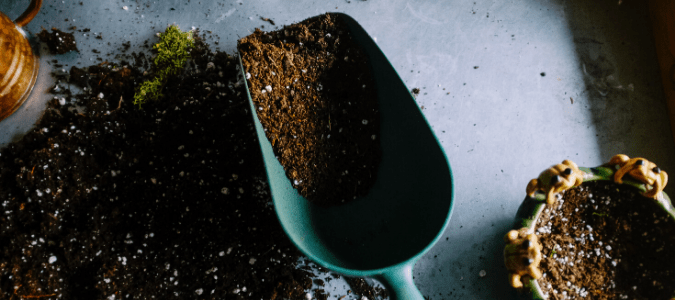Can You Use All Purpose Garden Soil To Plant Zoysia Sod

If you're planning to lay new sod in your yard and you are considering zoysia for its heat-tolerant and drought-resistant qualities, you need to know when to plant zoysia grass to ensure that it will have the best possible chance to thrive. This grass is popular among homeowners in warmer climates because it can withstand a lot of abuse in the form of hot sun and minimal rainfall, but it's still important to give zoysia its best start, to make sure your lawn will be lush, green and healthy.
It's easy to see why zoysia is well-loved by landscapers and homeowners alike. Though it is considered a warm-season grass, zoysia also tolerates cold well, so it can easily thrive in all but the very coldest parts of the country. It loves full sun but can also take moderate amounts of shade, and because its blades grow so densely together, it is naturally weed-resistant. It also doesn't need as much as some grasses in the way of extra nutrients. Once established, zoysia can get by with fewer fertilizer applications than other popular grasses such as St. Augustine. In season, it brings a rich, dark green color to a yard; it turns brown when it goes dormant as temperatures drop, but greens up again once warm weather returns.
Although zoysia tolerates both heat and cold well, when you should plant zoysia grass still depends on your region's climate. The optimal time of year for planting zoysia is after the final frost of winter. In most areas of the country, that means mid- to late spring or early summer is the best time to plant zoysia in your yard. It can also be done in the early fall, as long as it's planted at least two months before the first frost hits, to ensure that it has enough time to become established before temperatures drop precipitously.
The process of seeding a new lawn with zoysia grass is one that takes time, and is best accomplished over at least a couple of weeks. The very first step is to decide whether you want to grow your lawn from seed, plugs or sod. Seeds are typically less expensive than sod, but since zoysia grows slowly (and its improved varieties often aren't available in seed form), most people choose to plant plugs or lay sod.
If you decide to take on this undertaking yourself, the next step is to measure your yard, so you'll know exactly how much topsoil and sod or seed you'll need. Some people prefer to do this precisely, with a tape measure (width multiplied by length, in feet, equals the number of square feet of sod you'll need, for example). Others prefer the slightly easier but less precise option of walking the length and width of the yard, and basing the square footage calculation on an assumption of three feet per stride.
Once you know how much zoysia grass will be required for your yard, it's time to remove all weeds and other plant life from the soil, and then put down a layer of compost to enrich it for a week or two. After this waiting period, it's a good idea to test the soil's pH level so you can improve it further if necessary. Zoysia does well in soil that is slightly acidic, so nutrients beyond those added by the compost may need to be applied. If you can't test the soil, consider using a lawn fertilizer to help make the soil levels more optimal for planting zoysia.
Next, it's time to prepare the surface of the soil by using a stiff rake to till and level it, removing any rocks, roots or sticks in the process. Once the soil is loosened and level, water the soil. You can also add a layer of topsoil before watering. After this, and before the soil dries out, the next step is to lay the sod! (Or the plugs, if that's the method you've chosen, or spread the seed if you're using zoysia seed.)
If you're using plugs or sod, be sure to time your project so you can lay the sod the same day it's delivered, to make sure it is as fresh and healthy as possible. Laying sod is relatively simple and something many homeowners can do themselves, though it does require a good amount of bending over and spending time on your knees.
To begin, it's a good idea to start laying sod along one side of your yard—preferably a straight edge, to ensure that each line of sod will be neat and even. After you've laid a row of sod, press it down with a roller or the back of a shovel in order to remove air pockets and ensure that it will take root. If you're seeding the soil, use a spreader to cast the zoysia seed evenly and ensure a full, lush lawn. There's no need to cover the seeds with soil; simply tamp them down lightly to ensure a good connection with the soil.
Follow up sod, plugs or seed with a thorough watering, and water daily for the first week to help the grass roots develop and become established. You can then reduce watering to two or three times a week for the next couple of weeks, and then to once a week after that, until the grass is fully established. Try to stay off the grass as much as possible during this period, to give it the best chance to thrive, and don't mow until it is several inches tall.
Some homeowners enjoy this type of yard beautification project, while others prefer to leave the physical labor to a professional who can get the job done quickly and efficiently. Lawn specialists can also determine the best types of grass for different yards, regions and usage needs, can create a lawn care schedule for you and can help with any other landscaping projects you have in mind.
Once your zoysia grass has been planted, it's time to learn more about how to care for it and how to catch any signs of disease in your lawn. Keep reading to learn about your new lawn's fertilizing schedule, as well as how to catch the signs of brown patch.

Zoysia Grass Fertilizer Schedule
Many people opt for zoysia over other grass options in part because of its reduced need for fertilizer and added nutrients. It's true that zoysia can adapt to many different soil conditions, but it's also true that fertilizer is sometimes needed to ensure that this grass flourishes. Fertilizer applied monthly during zoysia's growing season can help promote growth, and applied quarterly can help this grass receive the right levels of nutrients over time. Take care, however, not to apply fertilizer to zoysia too early or too late in the year, since an unexpected frost can cause extensive damage to a recently fertilized zoysia lawn.
To know if your zoysia grass needs fertilizer, you can purchase a soil test kit to determine your soil's levels of nitrogen and other nutrients. Lawn care specialists often conduct soil tests to make sure they give particular grasses the right levels and combinations of nutrients, and not too much of any of them. Zoysia typically thrives in soil with a pH of 6 to 6.5. If the soil's pH is too high, sulfur can lower it.
You should fertilize your zoysia lawn for the first time three weeks after the grass has turned green, and after you've already experienced the last frost. Depending on the results of your soil test, you should apply a half-pound to one pound of nitrogen for every 1,000 square feet once a month from May to August. In September, do not apply nitrogen, but instead, test your lawn to see if it has insufficient levels of potassium. If needed, apply two pounds of potassium sulfate per every 1,000 square feet. If you are going to add potassium to your lawn, make sure to do it before the first frost of the season.
Zoysia grass should be fertilized when it's dry, not damp or wet. First, cut the grass to an inch or two in height—lower than most other popular grasses. Zoysia grass blades grow tougher as they grow longer; this is why it's generally best to mow more often, up to once or even twice a week, in order to keep a zoysia lawn shorter than you might with St. Augustine or other, softer grasses. Then, spread the fertilizer evenly over the grass, starting with the perimeter and working your way into the center, to ensure full and even coverage. After you've spread the fertilizer, you can water it in to help the grass begin to absorb the fertilizer's nutrients. After that, you can return to your regular watering schedule of once a week or less often, depending on regional rainfall and your yard's particular needs.
Getting your lawn fertilization schedule right is important. Getting it right will not only make sure that your lawn has the nutrients that it needs, but also will ensure that your lawn doesn't become vulnerable to diseases, such as brown patch.

Zoysia Brown Patch: What Is It?
Brown patch is a soilborne yard fungus. Though zoysia is typically disease-resistant, different varieties of zoysia can be prone to brown patch, given the right conditions. Zoysia brown patch shows up as rings of brown grass in the midst of otherwise green expanses of your lawn. The borders of the patch might be yellow or orange, which indicates active disease. If the brown patch isn't identified and treated early, it will spread over time, and can widen to patches of brown grass up to twenty feet across. These brown patches aren't just unsightly—they're also vulnerable to weed growth.
To avoid zoysia brown patch, be sure not to overwater your zoysia grass, and avoid applying fertilizer too early or late in its growing season. Aerating the soil can help increase airflow to the roots of the grass and improve drainage. Never mow when the grass is wet, and keep it cut short, but not too short. These measures should help protect your zoysia lawn against brown patch and should keep your lawn green in the summer heat.
If you do notice patches of brown in your zoysia lawn that you suspect might be brown patch, it's a good idea to contact a lawn care specialist who can diagnose the problem and recommend and implement the proper lawn care treatment. To the untrained eye, brown patch can resemble other signs your grass is in trouble, so a professional can help you determine what to do next.
ABC Can Take Care of Your Lawn
There are a variety of benefits of having zoysia grass—it's relatively low maintenance, disease-resistant and can adapt to nearly any soil conditions. However, this type of grass needs to be planted correctly and needs occasional fertilizing. When you contact ABC Home & Commercial Services for our lawn services, you can feel confident that we will have your lawn on the right lawn care schedule, based on your wants and needs. This way, you'll have a lush, green lawn without having to do any of the work yourself.
Can You Use All Purpose Garden Soil To Plant Zoysia Sod
Source: https://www.abchomeandcommercial.com/blog/when-to-plant-zoysia-grass/
Posted by: schubertmompok.blogspot.com

0 Response to "Can You Use All Purpose Garden Soil To Plant Zoysia Sod"
Post a Comment